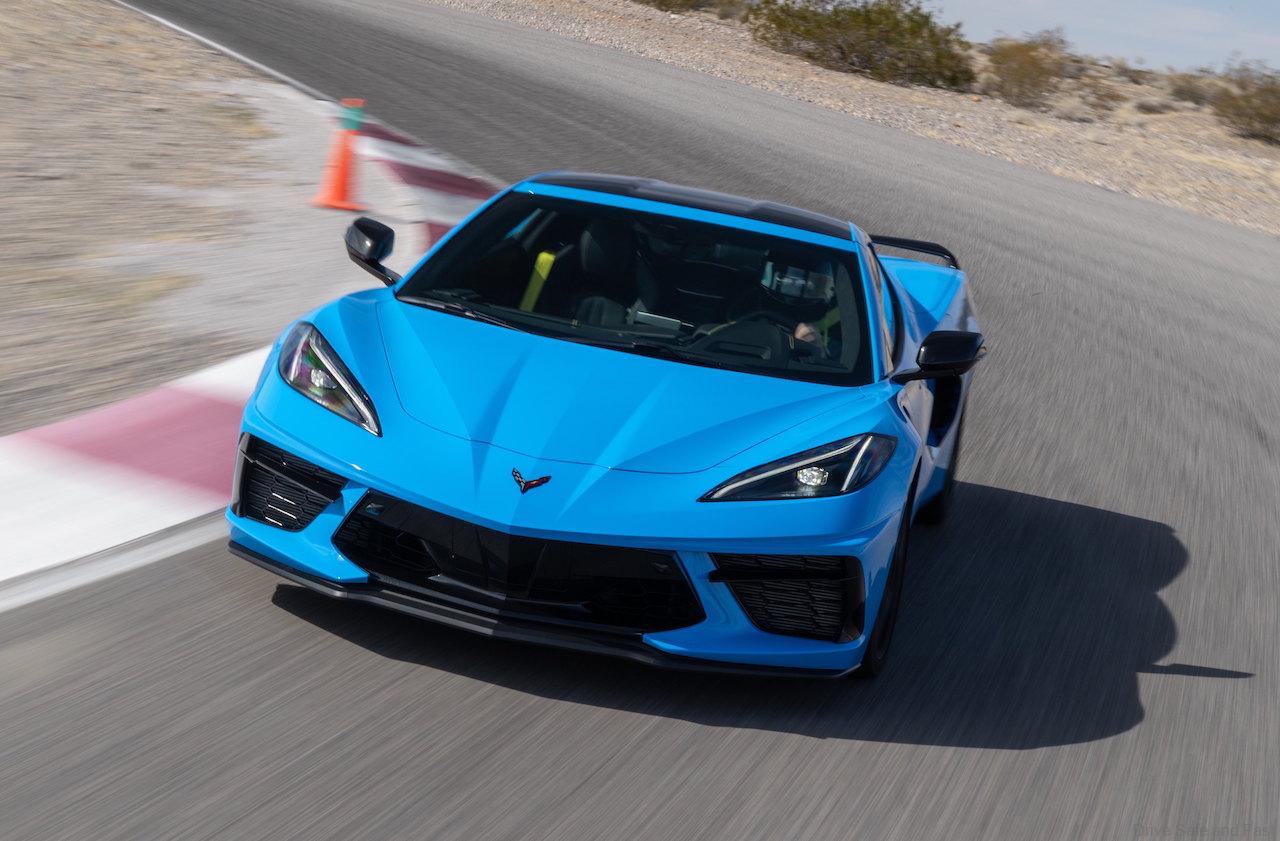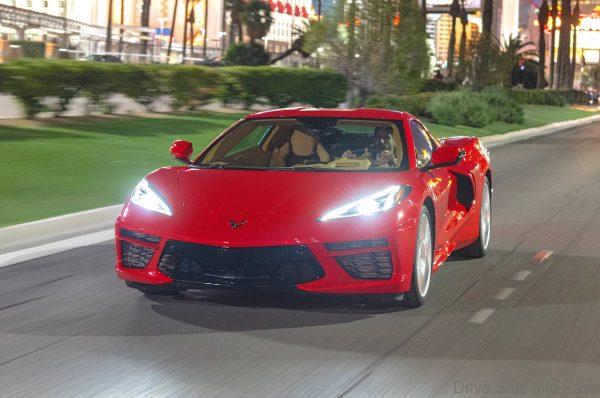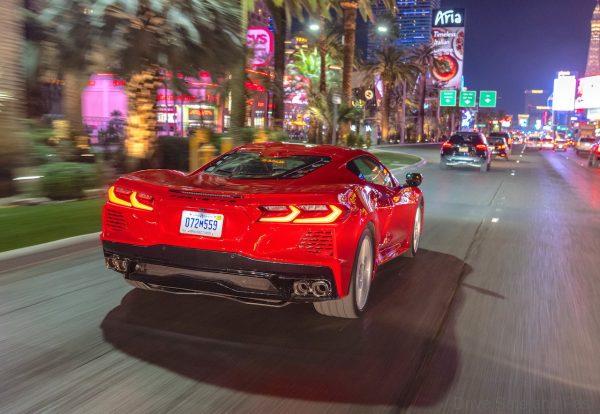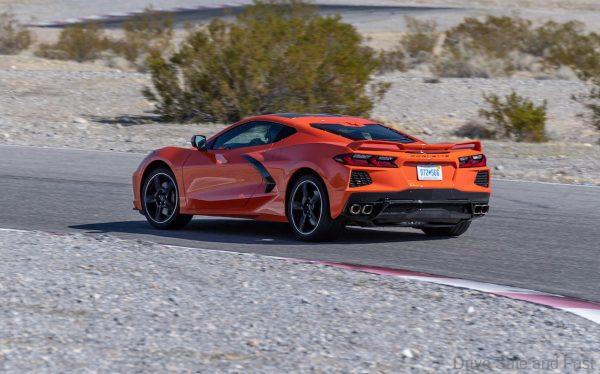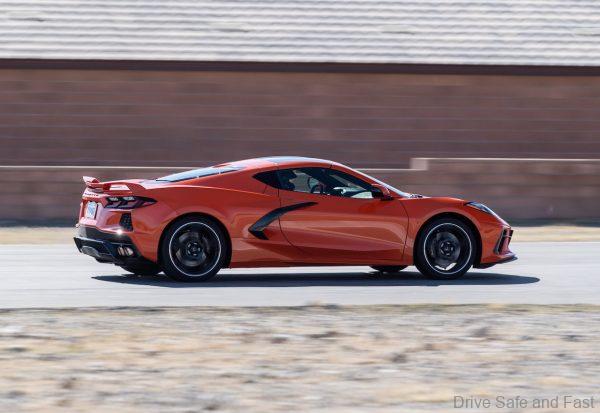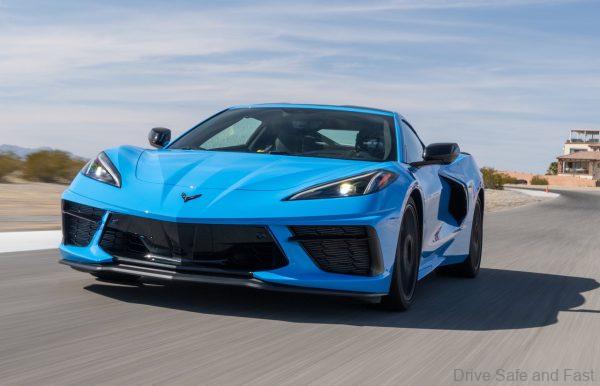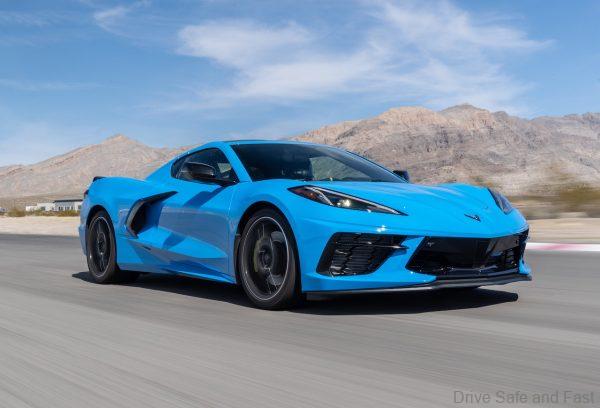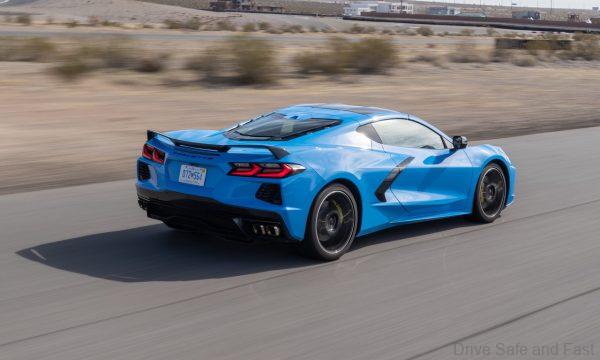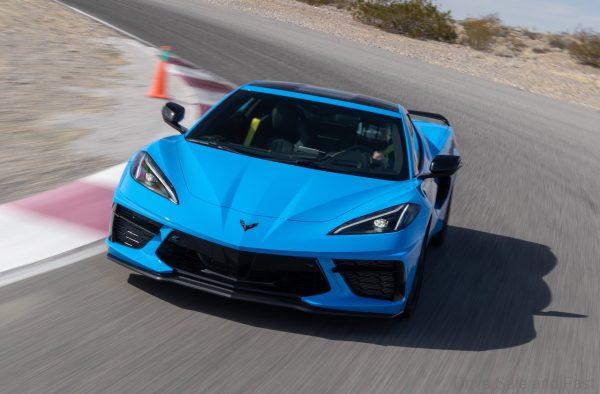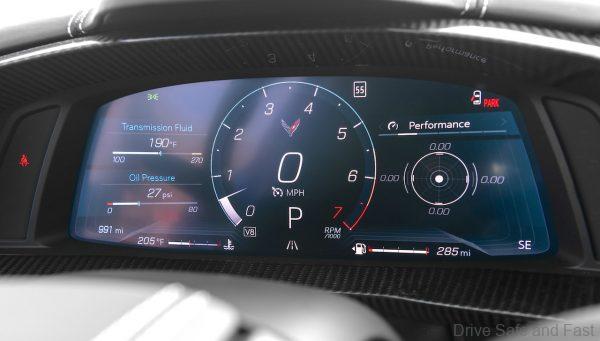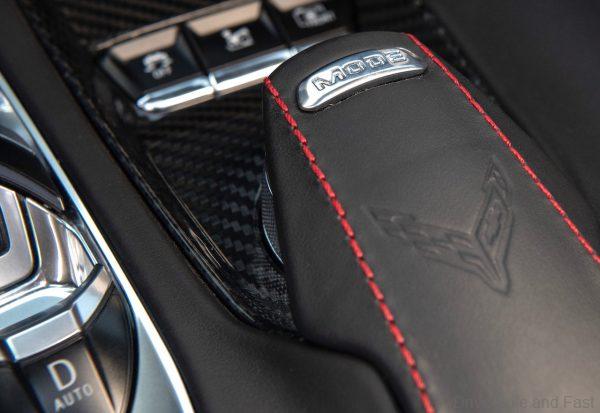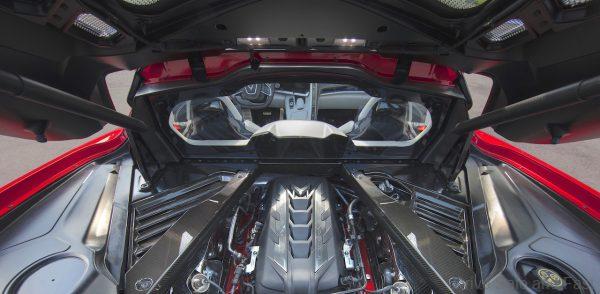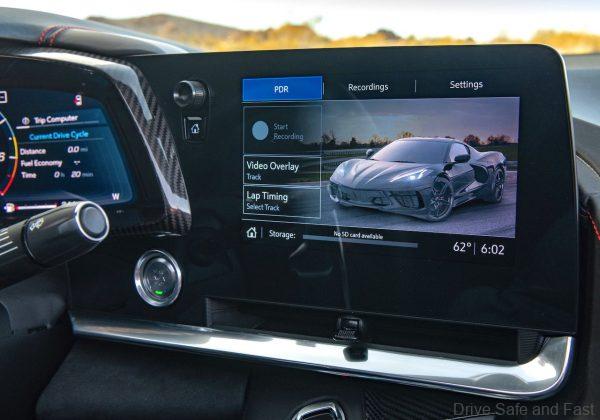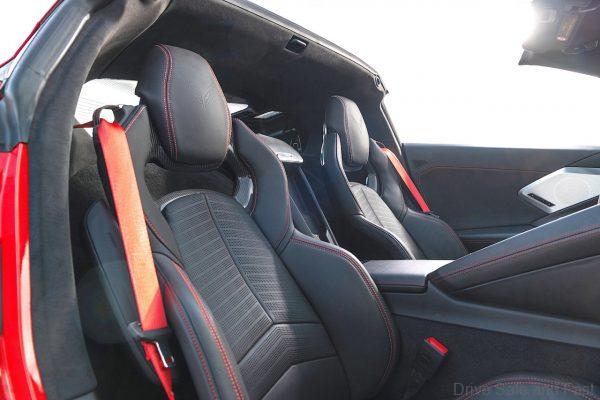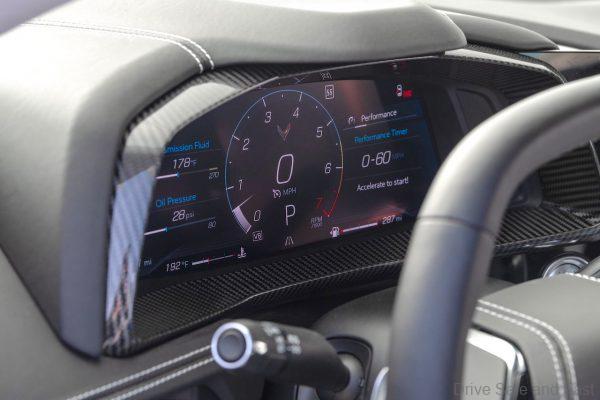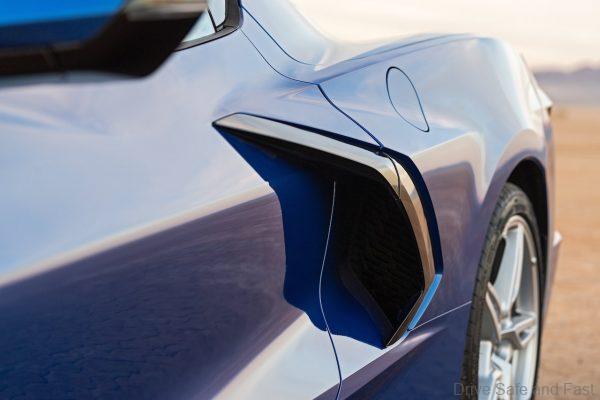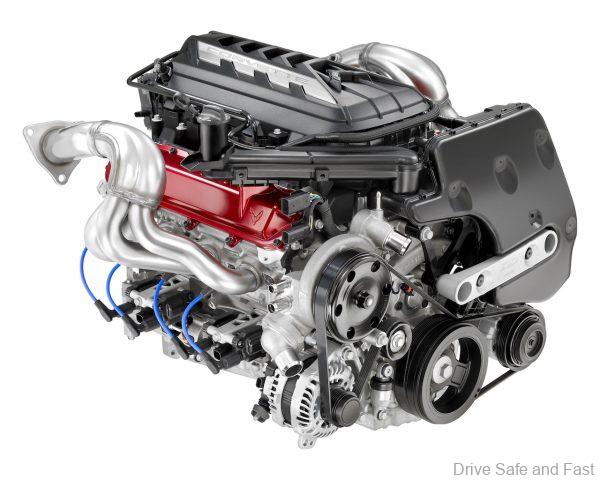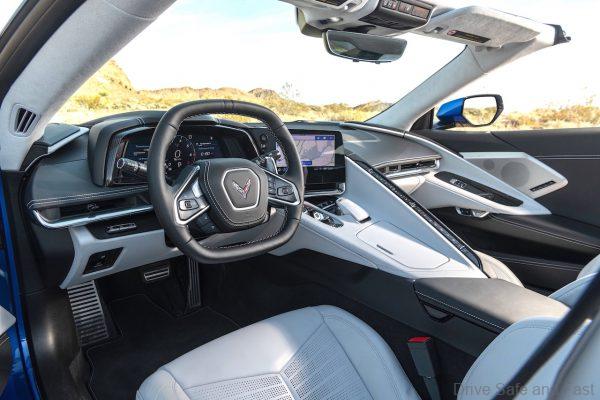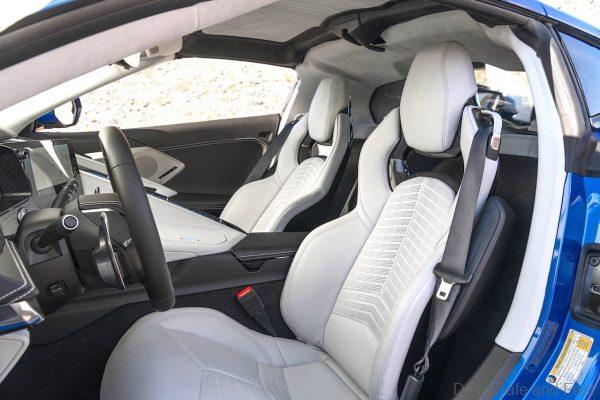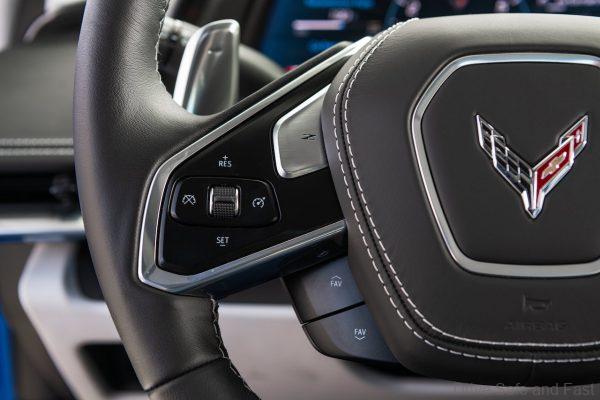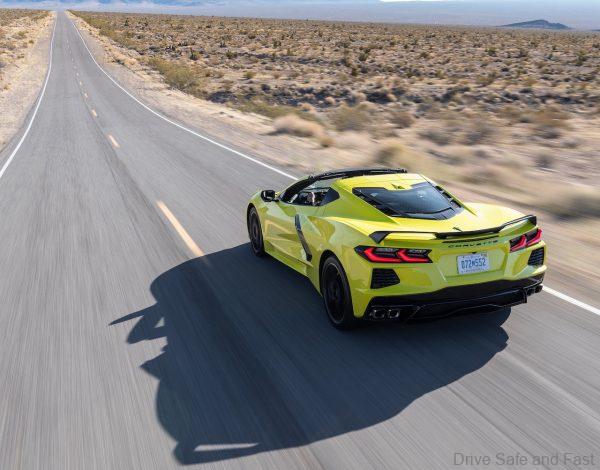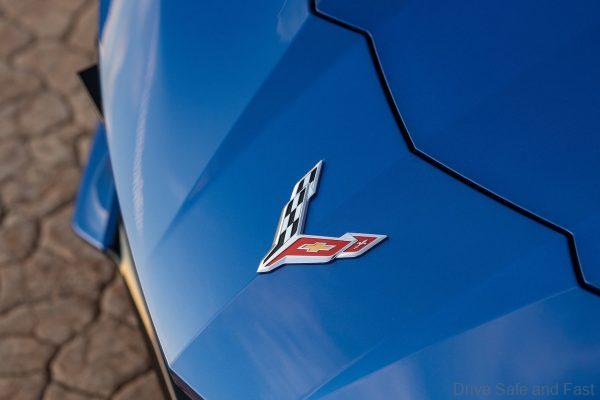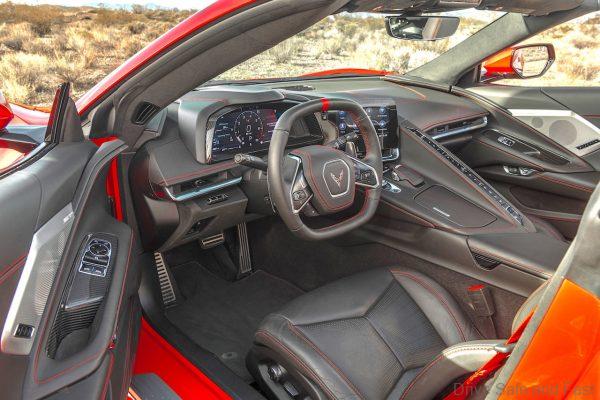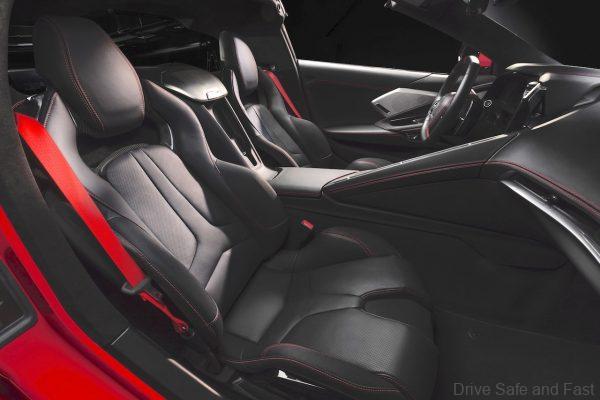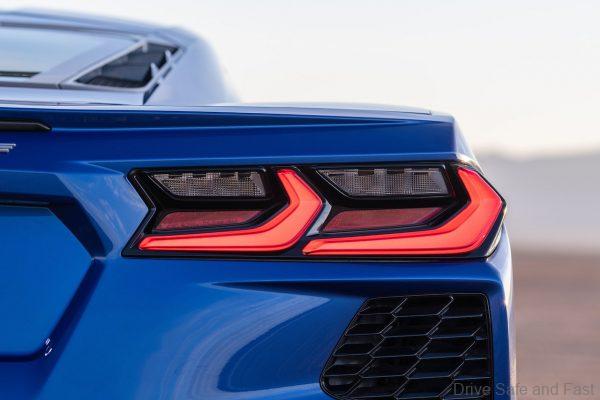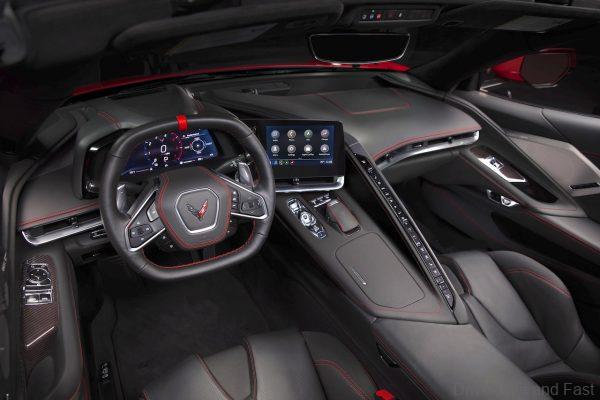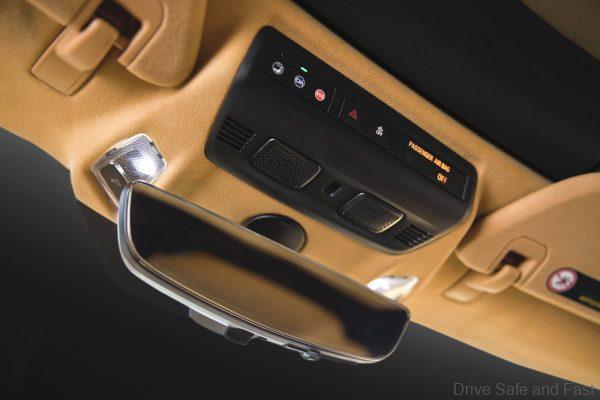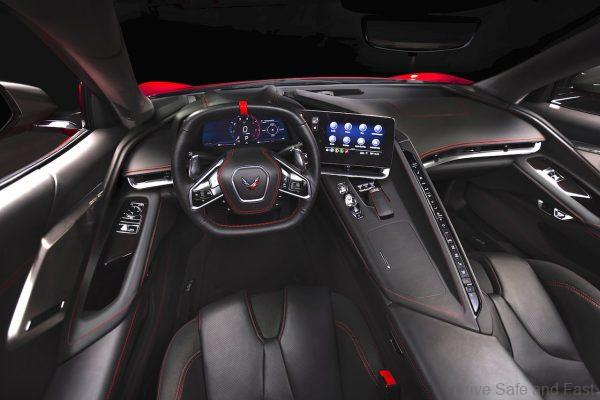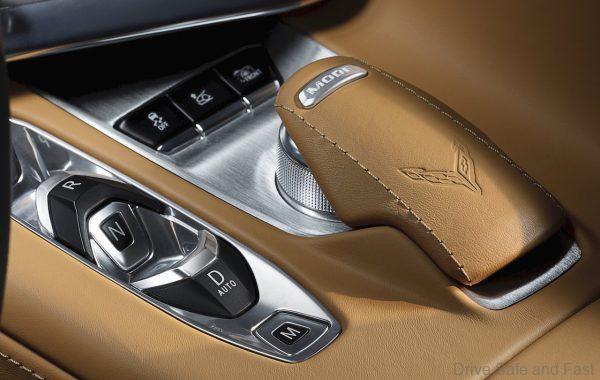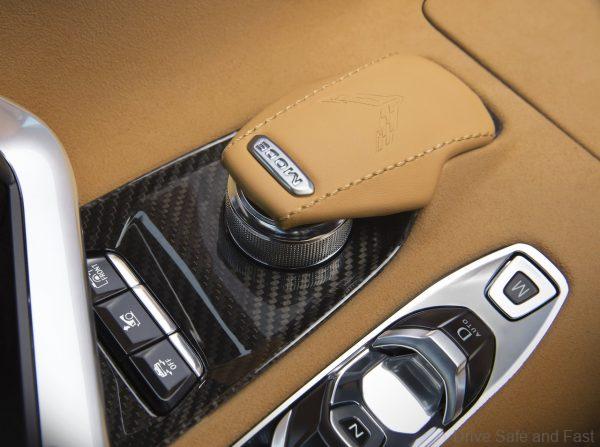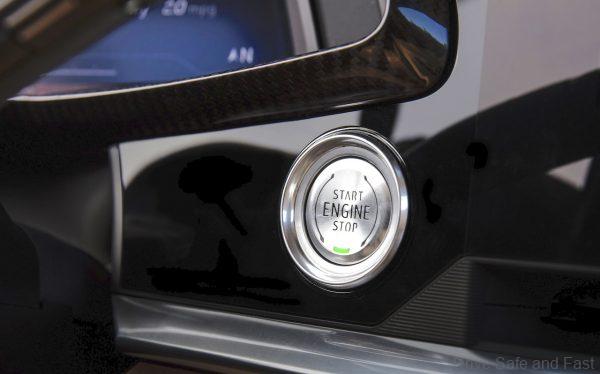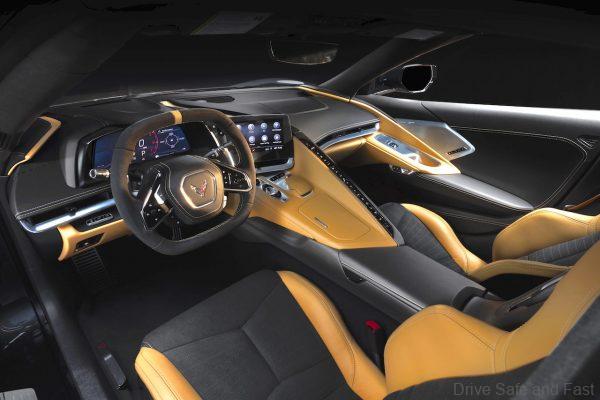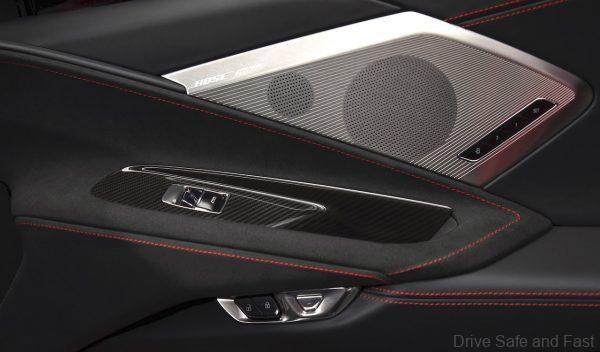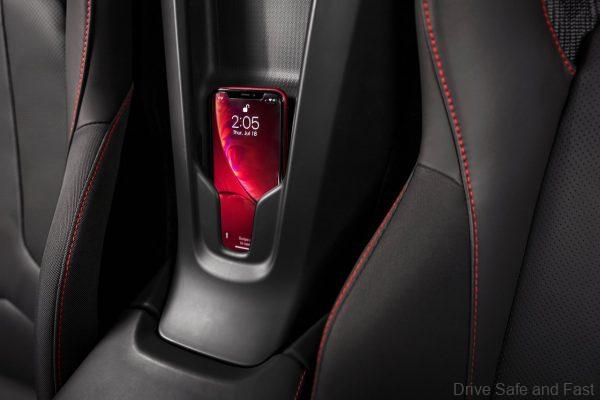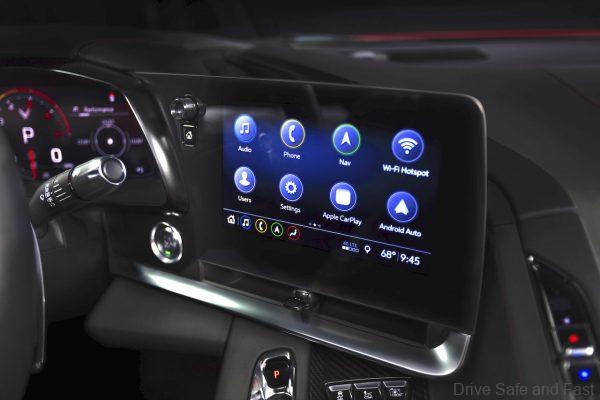Japan-spec Corvette might soon be available here too.
Good news to those who always wanted a Chevrolet Corvette in right hand drive. Having officially making its debut in Japan recently, it should not be long before a few of these American supercars find their way into the garages of affluent enthusiasts over here too.
Think about it. A proper V8 engine. 495bhp and 637Nm of torque and a shattering 0-100km/h acceleration time of 2.9 seconds and a possible top speed of 330km/h. Yes, the road tax will be a lofty RM16,530 a year and fuel sipping will not be favourable. However, if these two issues are bothering you, then it is obvious that you cannot afford this supercar that is marginally cheaper than a base Porsche 911, much lower than a starter Ferrari, the Portofino and about half the price of a Lamborghini.
Plus, you get true American muscle car power and probably the last of its kind before we are taken over by hybrid and electric driving machines.

This is also the first time a Corvette is available from the factory with the steering wheel on the right, news of this shouldn’t really a surprise anymore considering that Chevrolet themselves have made this fact official for a while already. What is nevertheless the story here however being that these RHD cars have made finally its public debut, with its initial launch recently occurring in Japan, before its introduction over in the UK and Australia some time further down the line.
To be available in six trim colours and four interior options, retail prices for these right hand drive Corvettes begin in Japan from ¥11,800,000 (RM445,000 before delivery costs) for the 2LT coupe before rising to ¥15,500,000 (RM585,000 before delivery costs) for the drop top.
These figure are of course naturally not inclusive of the several factory customisation options that are to be had with these American sports cars.
Perhaps more pertinent to Malaysians looking to import one soon however will probably be the news that getting one over here will likely require a little bit of a wait bit. This is not least because demand for these Corvettes are incredibly high in Japan with its initial allocation of 300 units already spoken for within 60 hours of its pre-sale announcement last year but more due to the fact that production at the Bowling Green plant in Kentucky where these cars are exclusively made has been halted from a shortage of parts.
PRESS RELEASE: Engineered to be a true supercar for every day
Corvette’s structure is built around its backbone: the center tunnel. This enables a light, stiff structure to serve as the foundation for the suspension system to perform in an optimized manner. By removing unwanted body compliance, Corvette customers will experience the ultimate in ride performance with outstanding lateral grip capabilities. The car has a solid, connected-to-the-road feel with minimal vibrations at high speeds or on long road trips.
The tunnel-dominant approach offers many advantages, including:
- Improved torsional rigidity with a solid, connected feel on both the road and track.
- Outstanding ingress/egress for a mid-engine vehicle. Unlike some competitors, there’s no need for oversized rocker panels to bear structural and load weights, making it easier to enter and exit the vehicle.
- Excellent stability due to a low center of gravity and outstanding handling.
- Preservation of Corvette’s beloved standard removable roof panel, which can easily be stored in the rear trunk.
- A front storage compartment that can fit an airline-spec carry-on and a laptop bag.
- Availability in both left- and right-hand-drive variants — a first for Corvette.
- Smart packaging with improved cabin comfort, including an additional inch of rearward seat travel and almost double the reclining angle.
The all-new Corvette Stingray is built with a smart mixed-materials strategy, enabling key features such as:
A strong, stiff and lightweight main structure of six high-pressure diecast aluminum parts, also known as the Bedford Six, which are manufactured at GM Powertrain in Bedford, Indiana. These minimize the number of joints within the vehicle, making a stiffer structure that aids in handling and track cornering.
Industry-first carbon fiber curved rear bumper beam for weight reduction.
Front and rear trunk tubs and dashboard molded from ultra-lightweight “float” derived from fiberglass and a proprietary resin. The material is so light that it can actually float in water. It works with other fiberglass and carbon fiber variants to lower mass and reduce noise and vibration.
Handling: core to Corvette’s fun-to-drive DNA
The Stingray is designed for superior ride comfort on the highway and well-balanced handling on the track.
The new Stingray features coil over dampers that create entirely new ride and handling characteristics. The mid-engine architecture allows for a short, straight and stiff steering system, coupled with an updated electronic steering system, making the driver’s chassis input instantaneous.
The new seating position places the car’s center of gravity close to the driver’s inside hip, so the car literally turns around the driver. It completely changes the perception of vehicle handling and responsiveness.
Other ride and handling upgrades include:
- Steering ratio improved from 16.25:1 to 15.7:1.
- New eBoost brakes that are more precise and tunable.
- The first sports car application of Michelin’s all-season performance tire that can corner at nearly 1G.
- Front suspension lift that raises ground clearance by approximately 40mm at the front bumper in 2.8 seconds, protecting against bumps, potholes, steep driveways and other road disturbances. It can operate at speeds up to 24 mph and be programmed to work automatically through GPS to remember up to 1,000 locations.
Launch control aided by the rear weight distribution, enabling the new Stingray to get off the line quicker than any Corvette in history.
Z51 Performance Package, which introduces a host of new technology to the 2020 Stingray:
• Performance suspension with manually adjustable threaded spring seats.
• Larger brake rotors with Z51 logo on calipers.
• Enhanced cooling.
• Specific axle ratio.
• Front brake cooling inlets.
• Performance exhaust.
An electronic limited slip differential integrated into the transaxle that modulates torque between the rear tires, enabling incredible vehicle stability.
A front splitter and open two-piece rear spoiler that add up to a combined 400 pounds of downforce while improving grip when cornering.
Available Magnetic Ride Control 4.0, which reads the road better, providing more precise data through suspension-mounted accelerometers. Its improved electronics respond faster and more smoothly to driver inputs and contribute to class-leading ride quality.
Available Performance Traction Management.
The jewel in the center
The 2020 Stingray’s heart is Chevy’s next-generation 6.2L Small Block V-8 LT2 engine, the only naturally aspirated V-8 in the segment. It will produce 495 horsepower (369 kW) and 470 lb-ft (637 Nm) of torque when equipped with performance exhaust — the most horsepower and torque for any entry Corvette.
The powertrain’s low position enables a low center of gravity for optimal handling. Perhaps the biggest update is found in the lubrication and ventilation system. For the first time ever, the base Stingray will use an engine-mounted dry sump oil system and three scavenge pumps for improved track performance.
During serious track driving, oil volume remains high to avoid diminished performance. The new Stingray’s lateral capability is greatly improved, so the LT2’s dry sump lubrication system had to be redesigned to provide exceptional engine performance even at lateral acceleration levels exceeding 1G in all directions.
A lightweight, 3.2mm-thick glass panel on the rear hatch allows owners to show off the engine. This panel features a cantilevered trailing edge to evacuate heat from the LT2 engine compartment.
Other notable engine characteristics include:
- Jewel-like setting in the rear compartment, visible through the rear glass hatch.
- Every part, including the exhaust system’s wires, tubes, routing fasteners, coolant hoses, exhaust manifold and even the bolts and fasteners, is built with appearance in mind. All engine components were given careful consideration just like the exterior, and even the heat shields are textured.
- A brand-new block and vent system. The centerline of the crankshaft sits an inch lower to the ground where it mates to the transaxle for better handling.
- Low-profile oil pan that reduces mass.
- Oil cooler capacity increased by 25 percent.
- Standard edge Red valve covers.
- A shift of a different kind
The next generation LT2 is paired with Chevrolet’s first eight speed dual-clutch transmission, which provides lightning-fast shifts and excellent power transfer. This transmission is uniquely designed with TREMEC to provide the best of both worlds: the spirited, direct connected feeling of a manual and the premium driving comfort of an automatic. The double-paddle de-clutch feature even allows the driver to disconnect the clutch by holding both paddles for more manual control. Paddle shifters allow drivers to choose a specific gear.
The new Small Block V-8 has a torque curve optimized to take advantage of the bespoke DCT’s lightning-fast shifts. Engineers set the DCT up with a very low first gear to leverage the additional traction to get the car off the line quickly, and its close-ratio gears 2 through 6 keep the engine near the power peak on track. Tall seventh and eighth gears make for easy long-distance cruising with low mechanical stress and excellent fuel economy.
The DCT is mated to a new Electronic Transmission Range Selector. With this electric shifter there’s no mechanical interface between the shift lever and the transmission. The Corvette’s electric shifter incorporates two pull toggles for Reverse and Drive and push buttons for Park, Neutral and Low/Manual. The shifter has been designed to be more attractive and compact than a standard shifter.
All-new technology improves performance and usability
Driver mode choices have been expanded from four to six, allowing drivers to tweak the feel of their Corvettes to their personal preference. The familiar Weather, Tour, Sport and Track modes remain, and there are two new modes:
- MyMode, a configurable setting for preferred driving style that can remain between key cycles.
- Z mode, named after the famed Z06, ZR1 and Z51 Corvette performance packages, is activated through a “Z” button on the steering wheel. This is a single-use mode that takes MyMode configurations one step further, allowing drivers to adjust the engine and transmission as well.
The 2020 Stingray benefits from GM’s new digital vehicle platform, an all-new electronic architecture that enables the adoption of the company’s next generation of technologies. The architecture minimizes wiring while allowing for faster signal transmission between different vehicle systems and the higher resolution screens. The platform enables continuous vehicle improvements through over-the-air updates and enhanced cybersecurity measures.
Other new technology features include:
- Corvette’s next-generation infotainment system is faster and simpler, with a higher resolution display.
- Chevy-first one-touch Bluetooth pairing with Near Field Communication.
- Wireless charging.
- Learn-as-you-go voice recognition.
- Improved real-time traffic.
- A new, 12-inch customizable instrument cluster tailored to all six driver modes.
New electrical features include:
- Driver and passenger seat memory.
- Heated steering wheel.
- Tire fill alert warns the driver when tire meets maximum pressure.
- Two new Bose audio systems: a 10-speaker standard premium system and available 14-speaker Bose Performance Series system. Speaker grilles are integrated into lower door trim for a refined look that also helps guard against damage from footwear.
- The industry-pioneering Performance Data Recorder, an advanced driving analysis tool upgraded with high-definition resolution camera and a new, in-vehicle user interface. Customers can record both circuit and point-to-point road courses. The PDR can be set to auto-record like a dash cam that starts a recording every time the Corvette is running, or configured to only start when the car is set to Valet mode.


